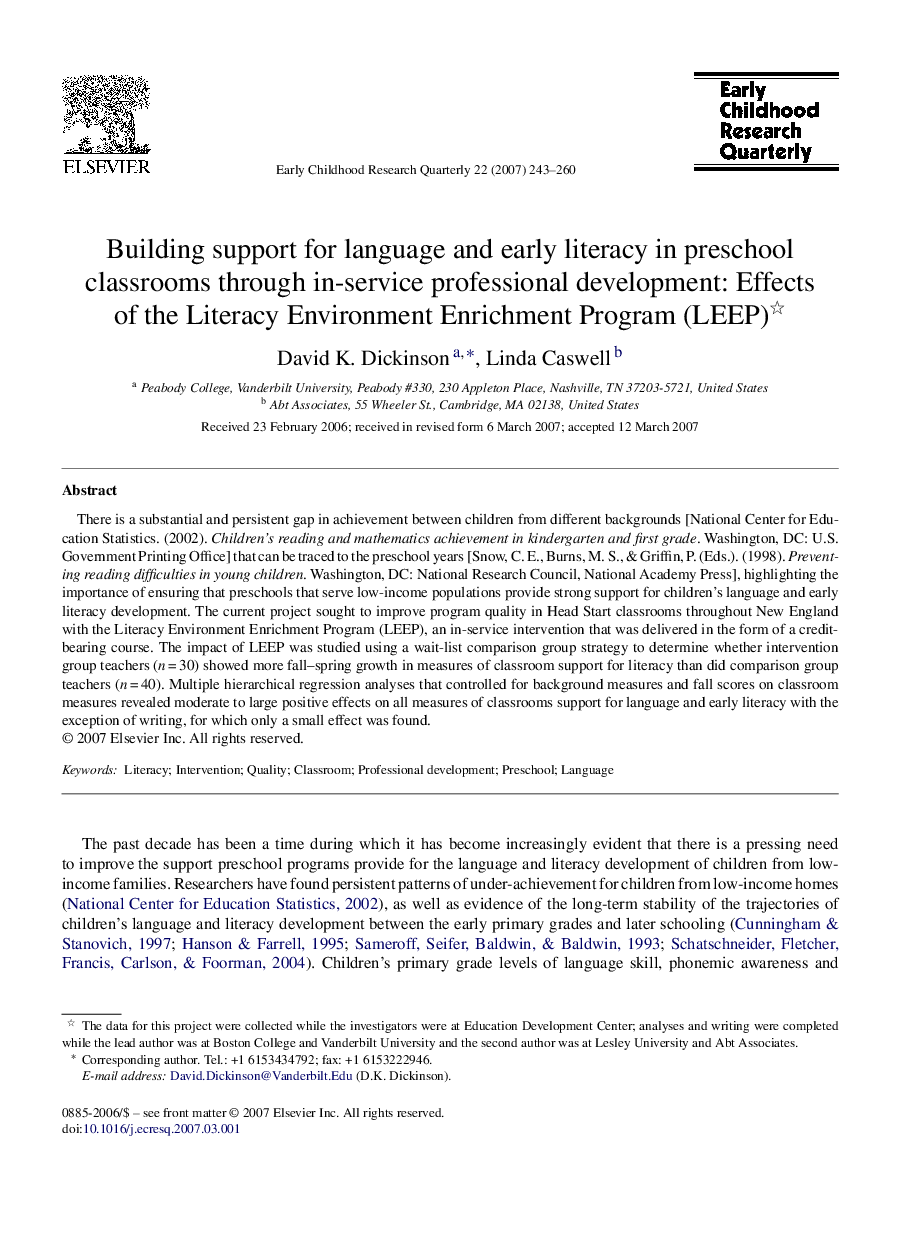| Article ID | Journal | Published Year | Pages | File Type |
|---|---|---|---|---|
| 354006 | Early Childhood Research Quarterly | 2007 | 18 Pages |
There is a substantial and persistent gap in achievement between children from different backgrounds [National Center for Education Statistics. (2002). Children's reading and mathematics achievement in kindergarten and first grade. Washington, DC: U.S. Government Printing Office] that can be traced to the preschool years [Snow, C. E., Burns, M. S., & Griffin, P. (Eds.). (1998). Preventing reading difficulties in young children. Washington, DC: National Research Council, National Academy Press], highlighting the importance of ensuring that preschools that serve low-income populations provide strong support for children's language and early literacy development. The current project sought to improve program quality in Head Start classrooms throughout New England with the Literacy Environment Enrichment Program (LEEP), an in-service intervention that was delivered in the form of a credit-bearing course. The impact of LEEP was studied using a wait-list comparison group strategy to determine whether intervention group teachers (n = 30) showed more fall–spring growth in measures of classroom support for literacy than did comparison group teachers (n = 40). Multiple hierarchical regression analyses that controlled for background measures and fall scores on classroom measures revealed moderate to large positive effects on all measures of classrooms support for language and early literacy with the exception of writing, for which only a small effect was found.
